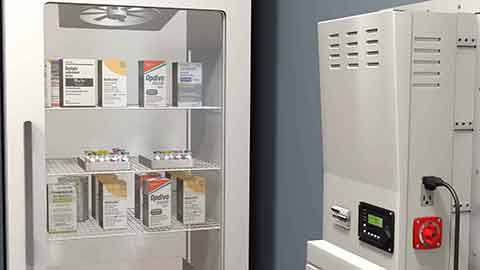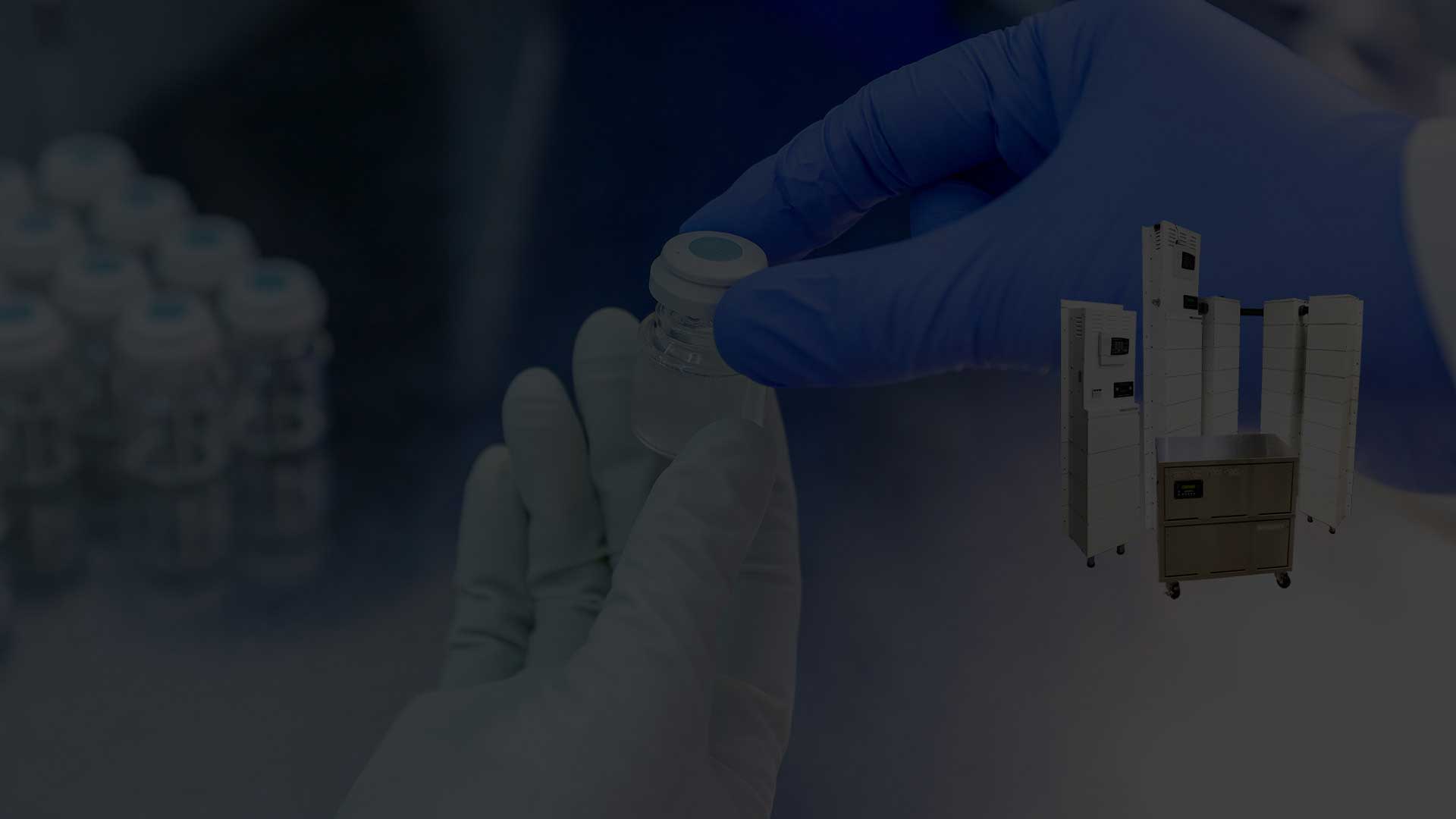Healthcare Compliance |
March 13, 2024
| Medi-Products
What Are the NSF456 Vaccine Storage Standards?
VACCINE STORAGE STANDARD
NSF456...IS YOUR FACILITY COMPLIANT?
The new vaccine storage standard, NSF456, was designed in concert with the U.S. Centers for Disease Control and Prevention (CDC) and NSF International, formerly known as the National Sanitation Foundation, a product testing, inspection, and certification organization based in Ann Arbor, Michigan. In addition to the two organizations mentioned, vaccine manufacturers and equipment suppliers themselves were involved in the development of NSF456, the purpose of which is to create a universal criterion through which to judge the performance and construction of vaccine storage units. Applying to refrigerators, freezers and combination units, vaccine storage standard NSF 456 establishes comprehensive temperature control requirements to maintain the cold chain throughout the vaccine distribution process, from production and delivery to final administration.
The CDC defines the cold chain as “A temperature-controlled supply chain that includes all vaccine-related equipment and procedures. The cold chain begins with the cold storage unit at the manufacturing plant, extends to the transport and delivery of the vaccine and correct storage at the provider facility, and ends with administration of the vaccine to the patient1.” According to a December 2021 report from the International Federation of Pharmaceutical Manufacturers & Associations (IFPMA), worldwide, manufacturers of the numerous COVID-19 vaccines were able to scale production from zero to 11.2 billion doses within the calendar year 20212. As the COVID-19 vaccine supply continues to rapidly scale worldwide, it is more important than ever to increase our efforts in reducing the number of doses that need to be discarded because of lost potency due to improper temperature regulation. The CDC highlights 3 main contributors in maintaining proper cold chain adherence, “a well-trained staff, reliable storage and temperature monitoring equipment and accurate vaccine inventory management1”. Globally, the World Health Organization (WHO) estimates that over 50% of vaccines distributed worldwide are wasted each year4, with the primary cause of such high waste number being “Bad management …of unopened vials being discarded because of expiry and heat exposure and freezing in the cold chain”.
What Does Vaccine Storage Standard NSF 456 Mean for You?
Vaccine storage standard NSF 456 was developed by the CDC and NSF International as a voluntary standard and thus not subject to regulatory oversight from the CDC. Instead, it helps to enhance the guidelines provided by the CDC in their Vaccine Storage and Handling Toolkit. Vaccine storage standard NSF 456 clarifies the temperature requirements for maintaining optimal cold chain management and aims to reduce the number of dosages wasted in a time where every dose of a vaccine is a step toward a return to normal.
For healthcare providers, while they not obligated to replace their current equipment, vaccine storage standard NSF 456 ensures that new equipment purchased and meeting the NSF 456 vaccine storage standard will provide the capabilities necessary to lower the long-run costs associated with needing replacement vaccine dosages. Applying to more than just COVID-19, vaccine storage standard NSF 456 ensures that the most crucial and widely available vaccines are stored at their proper temperatures, whether refrigerated (HepA, HepB, HPV, etc.) or frozen (MMRV, Moderna/NIH COVID-19, etc.).
What are the Requirements Detailed in Vaccine Storage Standard NSF 456?
Vaccine storage standard NSF 456 was developed by the CDC and NSF International as a voluntary standard and thus not subject to regulatory oversight from the CDC. Instead, it helps to enhance the guidelines provided by the CDC in their Vaccine Storage and Handling Toolkit. Vaccine storage standard NSF 456 clarifies the temperature requirements for maintaining optimal cold chain management and aims to reduce the number of dosages wasted in a time where every dose of a vaccine is a step toward a return to normal.
Part of what makes the NSF 456 standard unique is its testing process. In lieu of a standard temperature probe that may not provide an accurate reading , a vaccine simulation device (VSD) is used to help accurately simulate and interpret the conditions an actual vial of vaccine would be subject to in a real-world environment. Additionally, the VSD is placed in such a manner as to create a worst-case scenario, ensuring the survivability of vaccines when subjected to less-than-ideal conditions. As detailed by Intertek, the standards presented by NSF 456 are as follows3:
-
Refrigerators
During door opening test, no probe shall go below 2°C (35.6°F) or above 8°C (46.4°F).After 3- minute opening test, temperature will recover to 5°C (41°F) +/- 3°C (37.4°F)-50-. -
Freezers
During door opening test, no probe shall go below -50°C (-58°F) or above -15°C (5°F).After 3- minute opening test, temperature of probes will not rise above -15 ° C (5°F). -
Sample Requirements
A minimum of one unit per model must be tested, and family grouping will be vetted by engineering.
Where can I buy a Refrigerator or Freezer that complies with NSF456?
A member of the committee that helped to develop the NSF 456 standard, American BioTech Supply offers a range of vaccine refrigerators that have already been tested and are officially NSF456 certified. For the ultimate assurance when storing vaccines, a MediProducts battery backup unit pairs perfectly with your NSF 456 compliant units, providing backup power and guaranteeing continued temperature regulation in the case of an outage and securing your stock against potential loss.
Learn More About Battery Backup Power
To answer even more of your questions and find additional solutions to problems that could affect your medical facility or laboratory, check out these other articles from the Medi-Products blog and the Medi-Products Learning Center:
CDC Vaccine Storage and Temperature Guidelines
The Most Popular Backup UPS Generator Brands
Meeting Recommended Standards and Requirements and for VFC, CDC and NSF456
Sources
- Vaccine Storage and Handling Toolkit, US Center for Disease Control and Prevention, Atlanta, GA, 2021.
- “11 Billion COVID-19 Vaccines Produced in 2021 Has Resulted in the Biggest Immunization Campaign in Human History and 2022 Will Require More and Better Vaccine Redistribution and Innovation.” IFPMA, International Federation of Pharmaceutical Manufacturers & Associations, 16 Dec. 2021, https://www.ifpma.org/resource-centre/11-billion-covid-19-vaccines-produced-in-2021-has-resulted-in-the-biggest-immunization-campaign-in-human-history-and-2022-will-require-more-and-better-vaccine-redistribution-and-innovation/#:~:text=Allow-,11%20billion%20COVID%2D19%20vaccines%20produced%20in%202021%20has%20resulted,better%20vaccine%20redistribution%20and%20innovation.
- Intertek. “NSF 456 Vaccine Storage Testing.” NSF 456 Vaccine Storage Testing, Intertek Group PLC, 13 Jan. 2022, https://www.intertek.com/appliances/vaccine-storage-testing/".
- Monitoring vaccine wastage at country level (2005), World Health Organization, WHO/V&B/03.18. Rev.1, http://apps.who.int/iris/bitstream/handle/10665/68463/WHO_VB_03.18.Rev.1_eng.pdf?sequence=1&isAllowed=y.


